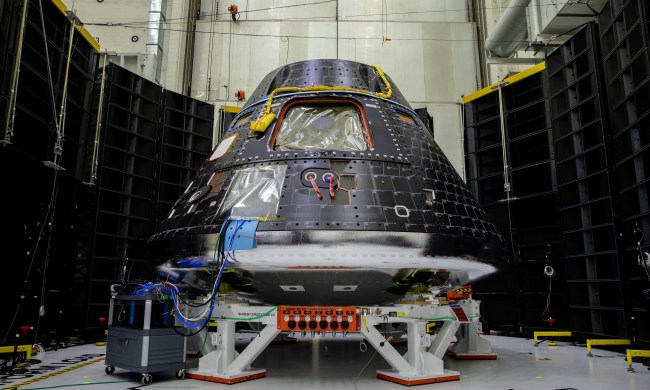We’re coming to the end of Black Hole Week, NASA’s celebration of the beastly cosmic monsters which suck in light, matter, and everything else that comes too close to them. But just because they eat light doesn’t mean black holes are impossible to imagine. As part of the festivities, the media department at NASA’s Goddard Space Flight Center has shared a selection of some of the best visualizations of black holes, so you can get an idea of what these mind-bending phenomena are like.
The images, which are also available as desktop and mobile wallpapers should you wish to decorate your devices with black hole imagery, show simulations and visualizations created to try and picture what the weird effects of the extreme gravitational forces around a black hole would be. They include a simulation of a binary system consisting of two interacting black holes:

A visualization of a similar black hole binary:

An illustration of the disk of matter swirling around a black hole, called the accretion disk, which will eventual be sucked into the black hole once it passes the event horizon, as well as an incredibly hot region called the corona which sends X-rays streaming out into space:

A composite image showing our galaxy’s bustling center, where objects dance around the supermassive black hole at the heart of the Milky Way:

And a visible light image taken by Hubble showing the huge jets of energy given off by the supermassive black hole in a galaxy called Hercules A:

For a long time, it was thought that black holes were impossible to image because of their light-devouring properties. But the Event Horizon Telescope project made history in 2019 when it captured the first-ever image of a black hole. They were able to use radio telescopes from all over the world to work together to capture signals from the very edge of an event horizon, the boundary around the black hole from which nothing can escape. They imaged an absolutely enormous black hole at the heart of the galaxy Messier 87, located 55 million light-years away.
Now, the Event Horizon Telescope (EHT) team is gearing up for another big announcement. According to the European Southern Observatory, the EHT team will present “groundbreaking” results regarding a finding in the Milky Way this week, May 12. So keep your eyes on black hole news this week, as there could be a picture of the supermassive black hole at the center of our galaxy, called Sagittarius A*, on the way.



